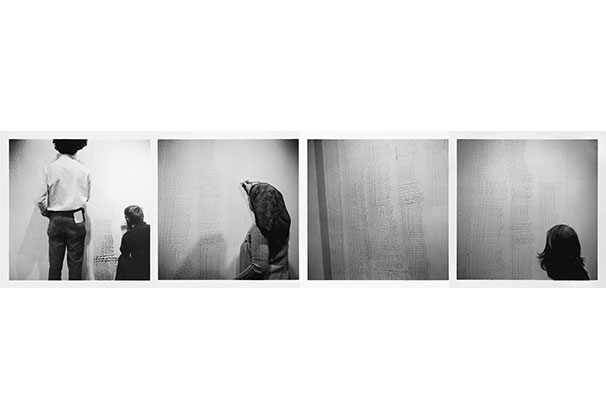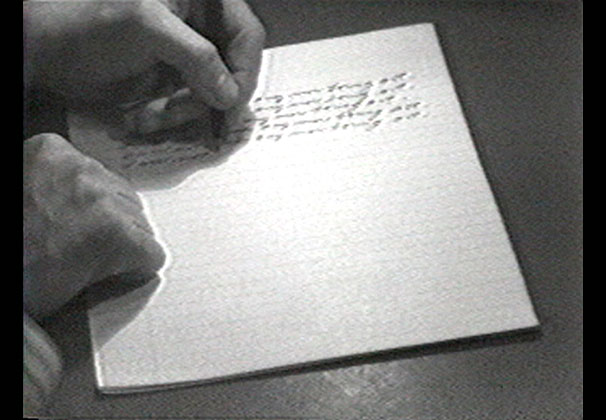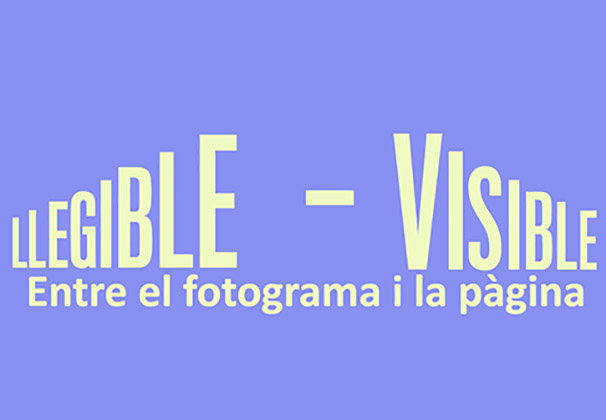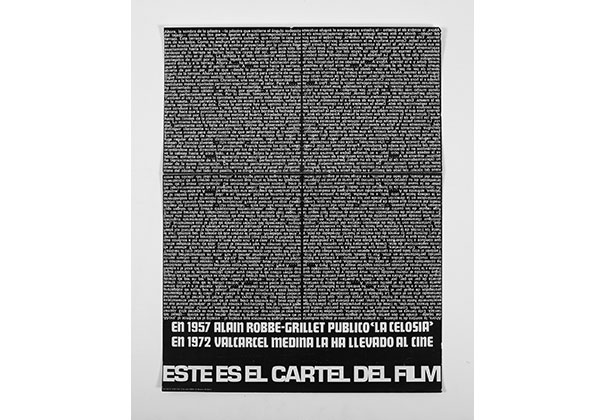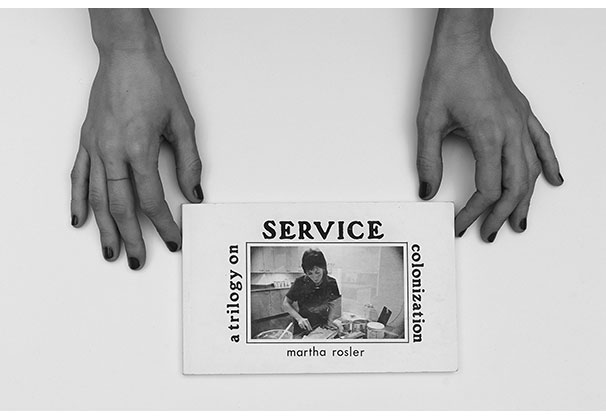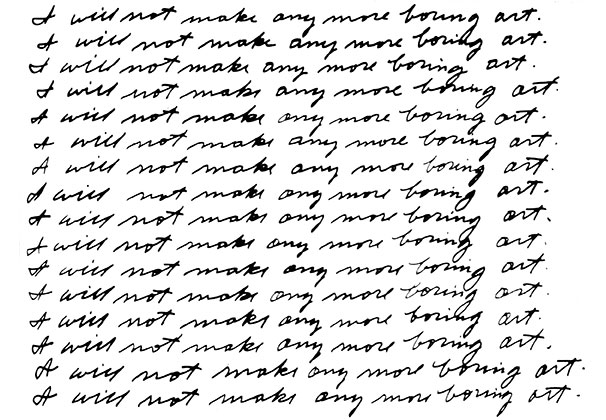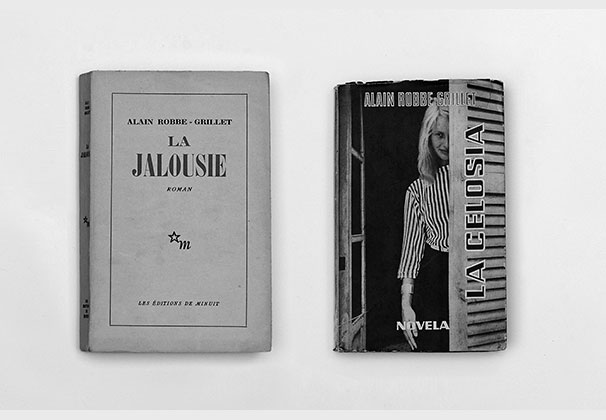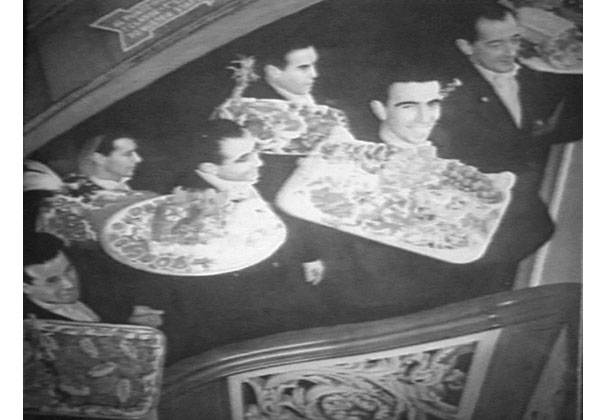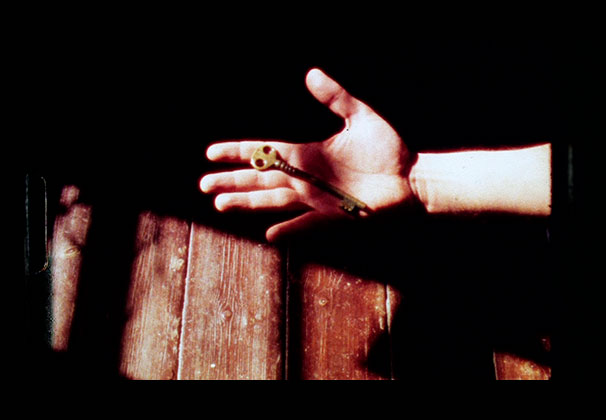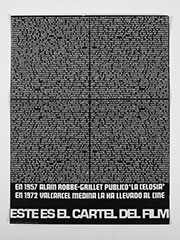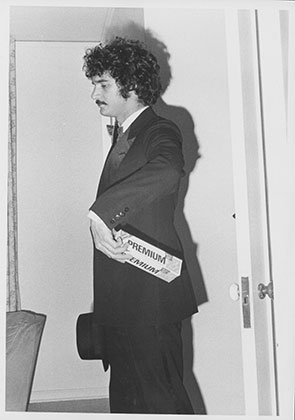What are you looking for?
You might be looking for...
Legible – Visible
Between the Film Frame and the Page

Exhibition
Artists: John Baldessari, Julián Barón, Christian Boltanski, Stan Brakhage, stanley brouwn, Ulises Carrión, Cine Quieto (Núria Gómez Gabriel and Gloria Vilches), Jef Cornelis, Patrícia Dauder, Guy Debord, RTVE Publications Department, Fortunato Depero, Gilbert & George, Dan Graham, Vicente Huidobro, Dominique Hurth, William Kentridge, Rob van Leijsen, Rose Lowder, Chris Marker, Eline McGeorge, Miralda, László Moholy-Nagy, Raymond Pettibon, Marcel Pey, Alain Robbe-Grillet, Martha Rosler, Benet Rossell, Ed Ruscha, Isidoro Valcárcel Medina, Gloria Vilches, Lawrence Weiner.
The exhibition Legible – Visible. Between the Film Frame and the Page aims to explore relationships with continuity, complementarity and dialectics that are established within artist publications and audio-visual works, two media that have seen periods of intense development in the creative context during the last century.
The crossover between publications and audio-visual material has its roots in the 1920s when, in his reflections on the aesthetics of light in relation to moving images, László Moholy-Nagy, redesigned the structure of cinematographic narration, while those in the field of graphic design radically re-evaluated the form and the function of text upon the page. At the beginning of the following decade, a time when silent film had reached its heyday and sound film was on the brink of bursting onto cinema screens, there were further attempts to overlap printed and audio-visual media. In 1931, the Italian designer, Fortunato Depero, outlined the project entitled New York film vissuto, a "book-film" intended to collect the details of his experience in New York. The project, which Depero would explain in a short publication but which would never achieve its full dimension, denotes his will to fuse, within a unique experience, printed narrative and cinematic rhythm. In 1934, addressing this relationship from the literary perspective, the Chilean poet, Vicente Huidobro, embarked upon creating a "written film", Cagliostro. Novela-film. It was a fresh attempt that pre-dated the screenplay as we understand it today.
Following the path already laid by this experiment and by others, the first significant moment in the simultaneous exploration of both spheres of art occurred in the 1970s, with the progressive spread of home video equipment and the expansion of artistic publications as an alternative mode of creation and distribution in the artistic market. Many protagonists of the conceptual movement, such as John Baldessari, Gilbert & George, Michael Snow, Ed Ruscha and, from Spain, Isidoro Valcárcel Medina, created works of art with dual natures, combining the book and film. However, not all of these "pairings" have the same profile. While sometimes, as in the case of John Baldessari's work, publication and film share the same content and even the same title, it is also true that at other times, the relationships between them are subtler and more complex. Valcárcel Medina took inspiration from a Robbe-Grillet novel to create a film and a poster, while the television producer, Jef Cornelis, gave his camera to stanley brouwn for the production of some of his pieces. In the video A Book (1978) by Ulises Carrión, the book occupies a space not outside, but inside the film; Miralda and Benet Rossell complement París. La Cumparsita with a film and a box of printed materials that document the performance that led to the piece. From a feminist perspective, Martha Rosler, in her work, transforms a project on ideological and social processes associated with food preparation and "the kitchen" as a cultural device into a series of postcards, a book and a video. Chris Marker and Guy Debord consider social criticism in films and books in which text plays a secondary role, or holds a position far removed from the norm. Although in a more isolated sense, this practice would continue throughout the 1980s and 90s, at the hands of such prominent figures as Dan Graham —Rock My Religion and his diverse printed materials— Lawrence Weiner, Raymond Pettibon and authors within contexts closer to home, including Marcel Pey, who continue to establish connections between the moving image and the printed page.
The year 2000 onward saw the second period of intense activity in this practice, which continues to the present day. This second stage is characterised by the impact of the digital revolution and the consequent expansion of editing tools, both for text and film, in the domestic sphere. With the birth of digital publications, paper editions have been freed from their primary function —to communicate— and they have become more flexible in terms of their formal and aesthetic possibilities. At the same time, both print media and celluloid film itself are under threat of becoming obsolete. During this stage, long-standing and renowned artists like William Kentridge and Tacita Dean continue to pursue the simultaneous exploration of both media alongside younger creators, such as Cine Quieto, Julián Barón, Eline McGeorge, Rob van Leijsen, Patrícia Dauder and Dominique Hurth, among others. The younger generation multiplies the formats: flip books, collections of postcards, slide projections and video clips join the book, film and video as appropriate media for this type of experimentation.
With more than twenty works of a dual nature —publication and film—, Legible – Visible. Between the Film Frame and the Page illustrates the interest of creators in interweaving and linking the printed page and the audio-visual document, overlapping them to the extent that they become almost fused into a single surface for creation. What happens when an artist "translates" certain content from a printed medium to an audio-visual format, or vice versa? What is changed, what is altered and what remains when this transposition of formats takes place? How do they complement or counterpose one another? This exhibition invites reflection on issues such as sequentiality, narrative, cinema, the passage of time, montage, representations of movement and, ultimately, the relationship between publications and audio-visual material, two of the most important media upon which the cultural and social landscape of our times is built.
Photo credits:
Isidoro Valcárcel Medina. La celosía. Cartell, 1972. Photo: Courtesy of Museo Nacional Centro de Arte Reina Sofía, Madrid
Isidoro Valcárcel Medina. La celosía. 1972. 16 mm film transferred to digital, b/w, sound, 115’. Photo: Courtesy of Museo Nacional Centro de Arte Reina Sofía, Madrid
Alain Robbe-Grillet. La Jalousie. París: Les Éditions de Minuit, 1957. Photo: Dani Pujalte
Alain Robbe-Grillet. La celosía. Barcelona: Seix Barral, 1958. Photo: Dani Pujalte
Ed Ruscha. Premium. 1971. 16 mm film, color, sound, 24’. Photo: Courtesy of Electronic Arts Intermix
Martha Rosler. Service: A Trilogy on Colonization. New York: Printed Matter, 1978 (reprinted 2008). Photo: Dani Pujalte
Martha Rosler. A Budding Gourmet. 1974. Video transferred to digital, b/w, sound, 17’ 14’’. Photo: Courtesy of Electronic Arts Intermix
Patrícia Dauder. 41o08’56.66′′ N/ 08o36’43.60′′ W. Barcelona: Cru, 2013. Photo: Dani Pujalte
Patrícia Dauder. 41o08’56.66′′ N/ 08o36’43.60′′ W. 2013. 12 sheets of paper printed offset, 100 x 70 cm. Photo: Courtesy of the artist and Projecte SD
John Baldessari. I Will Not Make Any More Boring Art. Newa Escòcia: Art Gallery of Nova Scotia, 2000 (reprinted 2011). Roll of wallpaper for wallpapering. Photo: Courtesy of John Baldessari Archive
John Baldessari. I Will Not Make Any More Boring Art. Action. Photo: Courtesy of John Baldessari Archive
John Baldessari. I Will Not Make Any More Boring Art. 1971. Video transferred to digital, b/w, sound, 31’ 17’’. Photo: Courtesy of Electronic Arts Intermix
Gloria Vilches. La isla. 2015. Music video for the song “La isla” by Dos Gajos. Super-8 film transferred to digital, color, sound, 3’ 24’’. Photos: Courtesy of the artist
Curator: Mela Dávila
Curator assistant: Maite Muñoz
Organizes and produces: Arts Santa Mònica – Departament de Cultura
